Samsung Galaxy S26 Plus vs Galaxy S24 Plus: Enough reasons to upgrade?

The Samsung Galaxy S26 family is coming fast and despite all the rumors about Samsung ditching the Galaxy S26 Plus in favor of the Edge model, it seems that we'll get another Galaxy Plus next year.
This model has always been the middle child in Samsung's flagship portfolio, offering a big-screen experience without breaking the bank. It's an alternative to the Galaxy Ultra, but in the past couple of generations, not the best-selling of the S-series lot.
However, we're getting a Galaxy S26 Plus, and given people often upgrade around the two year mark, it's interesting to compare it to its distant sibling - the Galaxy S24 Plus. Of course, the S26 Plus isn't official yet, it's expected around January 2026, but we have some idea about the upgrades (or the lack of upgrades) the S26 Plus will bring.
Galaxy S26 Plus vs Galaxy S24 Plus expected differences:
| Galaxy S26 Plus* | Galaxy S24 Plus |
|---|---|
| Similar design, oval camera bump | Flat sides, front and back design, separate holes for the cameras |
| Similar 6.7-inch display, potentially brighter | 6.7-inch screen, dynamic LTPO 120Hz refresh rate, 2600 nits peak |
| Exynos 2600 chipset, or Snapdragon 8 Elite Gen 5 | Snapdragon 8 Gen 3 or Exynos 2400 |
| Probably the same camera system, potentially ultrawide upgrade | 50MP main camera, 10MP telephoto, 12MP ultrawide |
| Similar RAM and storage variants | 12GB RAM and 256GB or 512GB onboard storage |
| Similar battery capacity and charging speeds | 4,900 mAh battery, 45W fast wired charging |
| Different colors (including orange) | Wide variety of color options |
Table of Contents:
Design and Size
Changes in the camera bump

A leaked design render of the Galaxy S26 Plus | Image by OnLeaks
The first renders of the Galaxy S26 Plus made rounds on the internet catwalk already, and we can see that the model closely follows the design language of its siblings. The new, pill-shaped camera bump is the main differentiator when it comes to looks, along with the color palette, of course.
The Galaxy S24 Plus features the same flat design; the separate holes for each camera on the back have different (smaller) rings around them, but overall, it's hard to tell the S24 Plus from the S25 Plus. The new camera bump on the S26 Plus would make a visual difference, but apart from that, we expect both phones to look very similar.
The Galaxy S24 Plus features the same flat design; the separate holes for each camera on the back have different (smaller) rings around them, but overall, it's hard to tell the S24 Plus from the S25 Plus. The new camera bump on the S26 Plus would make a visual difference, but apart from that, we expect both phones to look very similar.
| Galaxy S26 Plus* | Galaxy S24 Plus |
|---|---|
| Thickness 7.35 mm | Thickness 7.7 mm |
| Dimensions 158.4 x 75.7 mm | Dimensions 158.5 x 75.9 mm |
| Weight Around 190 grams | Weight 196 grams |
There are some rumors concerning the dimensions and weight of the upcoming Galaxy S26 Plus, and we're not in for a huge surprise. The phone is expected to be thinner than the Galaxy S24 Plus, not by a huge margin, but still thinner. The weight is almost identical, and the size too.
The building blocks of the S26 Plus are expected to be your usual glass and aluminum, just like the model before and the one before that. In terms of colors, the Galaxy S24 is available in Onyx Black, Marble Grey, Cobalt Violet, Amber Yellow, Jade Green, Sandstone Orange, and Sapphire Blue (some of these are Samsung.com exclusives). The S26 Plus only showed up in orange, but we expect a similarly rich palette when the phone comes out.
The building blocks of the S26 Plus are expected to be your usual glass and aluminum, just like the model before and the one before that. In terms of colors, the Galaxy S24 is available in Onyx Black, Marble Grey, Cobalt Violet, Amber Yellow, Jade Green, Sandstone Orange, and Sapphire Blue (some of these are Samsung.com exclusives). The S26 Plus only showed up in orange, but we expect a similarly rich palette when the phone comes out.
Display Differences
The rumored dimensions of the Galaxy S26 Plus point toward the same screen size, even though there's no specific information about things such as resolution, pixel density, refresh rate and brightness.
If we follow the trail back a couple of models we should get the same 1440 x 3120 resolution, resulting in the same 513 PPI pixel density. The refresh rate of the display in the S26 Plus will most likely also mimic the 120Hz dynamic refresh rate of the S24 Plus. We might get a brighter panel on the S26 Plus, as this is the new arms race in smartphone tech nowadays.
| Galaxy S26 Plus* | Galaxy S24 Plus |
|---|---|
| Size 6.7" | Size 6.7" |
| Brightness 3000 nits (peak) | Brightness 2600 nits (peak) |
*rumored
Speaking of brightness, the Galaxy S24 Plus managed 1279 nits at 100% APL in our brightness test, which is good but not that impressive by modern standards. We expect the S26 Plus to be brighter, but we have to measure it in our lab to see exactly how much brighter.
In terms of biometrics, Samsung struck gold with its ultrasonic under-display fingerprint scanner. It's been on several generations of S-series devices, and it works flawlessly. There's no reason to think that the S26 Plus won't get the same biometric tech.
In terms of biometrics, Samsung struck gold with its ultrasonic under-display fingerprint scanner. It's been on several generations of S-series devices, and it works flawlessly. There's no reason to think that the S26 Plus won't get the same biometric tech.
Performance and Software
Exynos again?
According to the latest info, the Galaxy S26 series will bring back the duality of Exynos and Snapdragon chipsets, depending on the market. The Galaxy S26 Plus is expected to feature the latest Qualcomm silicon—the Snapdragon 8 Elite Gen 5 in North America and China—while Europe and the rest of the world will get the Exynos 2600.
The last generation skipped the Exynos in favor of an all-Snapdragon lineup, but the Galaxy S24 Plus still featured two chipsets for the different market regions. We got the Exynos 2400 version, and its performance was mostly on par with its Snapdragon twin. Being two generations apart, there will be a substantial gap in performance between these two; we just need to find out how big of a gap exactly.
The last generation skipped the Exynos in favor of an all-Snapdragon lineup, but the Galaxy S24 Plus still featured two chipsets for the different market regions. We got the Exynos 2400 version, and its performance was mostly on par with its Snapdragon twin. Being two generations apart, there will be a substantial gap in performance between these two; we just need to find out how big of a gap exactly.
| Galaxy S26 Plus* | Galaxy S24 Plus |
|---|---|
| Chip Qualcomm Snapdragon 8 Elite Gen 5 Exynos 2600 | Chip Qualcomm Snapdragon 8 Gen 3 |
| Process 3nm | Process 4nm |
| RAM, Storage 12/256GB 12/512GB LPDDR5X RAM UFS 4.0 storage | RAM, Storage 12/256GB 12/512GB LPDDR5X RAM UFS 4.0 storage |
In terms of software, RAM, and storage—things look identical at this point. Both phones feature 12GB of RAM (an upgrade for the S24 Plus back in the day) and 256 or 512GB of onboard storage. The S24 Plus is now two years old, which means that two of the seven years of promised major OS updates have already passed.
The Galaxy S26 Plus is expected to launch with Android 16 out of the box and OneUI 8 on top. It will be supported for seven long years up until 2033.
The Galaxy S26 Plus is expected to launch with Android 16 out of the box and OneUI 8 on top. It will be supported for seven long years up until 2033.
Camera
No changes once again
The camera system on the Galaxy S26 Plus is still shrouded in mystery, but according to the little rumor info we have, there won't be any big upgrades to the back camera system. If true, this would mean Samsung is choosing to keep the same three cameras for yet another year, a slightly disappointing notion.
There's still a chance we can get a new ultrawide with a better pixel count, given other competitors are moving toward 50MP ultrawide cameras, but we have to wait and see.
| Galaxy S26 Plus* | Galaxy S24 Plus |
|---|---|
| Main 50 MP, f/1.8 24 mm 1/1.56" | Main 50 MP, f/1.8 24 mm 1/1.56" |
| Ultrawide 12 MP, f/2.2 13 mm 1/2.55" | Ultrawide 12 MP, f/2.2 13 mm 1/2.55" |
| Telephoto 10 MP, f/2.4 3X zoom (67mm) 1/3.94" | Telephoto 10 MP, f/2.4 3X zoom (67mm) 1/3.94" |
It's all algorithms and AI nowadays, so we shouldn't write off the Galaxy S26 Plus yet, despite it rocking the same camera system. It might still outscore the S24 Plus. Speaking of scores, the S24 Plus managed to score 152 (out of 158), an amazing score for a two-year-old phone with no aspirations to be a dedicated "camera" device.
We will test the S26 Plus once it arrives in our lab and also include some side-by-side samples to see if the new model will be able to topple the S24 Plus (which actually beat the S25 Plus in this department).
Battery Life and Charging
Another copy-paste?
The expected battery capacity inside the Galaxy S26 Plus copies the one in the previous generation and the one before that. 4,900 mAh is not small, but considering Far East rivals now exploit silicon-carbon tech and produce batteries pushing the 8,000 mAh mark, we expected more from Samsung.
In our battery test the Galaxy S24 Plus scored 7h 31m which put it in 46th place among phones tested in the past 2 years. It's a mediocre result and given the new chipset inside the Galaxy S26 Plus, we might get a very similar score. No silicon-carbon involved, sadly.
| Galaxy S26 Plus* | Galaxy S24 Plus |
|---|---|
| Battery size 4,900 mAh | Battery size 4,900 mAh |
Charging speeds 45W wired 15W wireless charging USB-C | Charging speeds 45W wired 15W wireless charging USB-C |
The same goes for the wired and wireless charging. There's been no changes in the past couple of years, and the Galaxy S26 Plus is expected to support the same 45W wired and 15W wireless charging speeds that are also supported by the Galaxy S24 Plus. Speaking of speed, the latter charges its battery from zero to full in 1 hour and 9 minutes—not terribly fast but not as slow as some iPhone devices.
Specs Comparison
|
|
|
| Samsung Galaxy S26+ | Samsung Galaxy S24+ |
Design
| Dimensions | |
|---|---|
| 158.5 x 75.9 x 7.7mm (~8.85 mm with camera bump) | |
| Weight | |
| 196.0 g | |
Display
| Size | |
|---|---|
| 6.7-inch | 6.7-inch |
| Type | |
| Dynamic AMOLED, 120Hz | Dynamic AMOLED, 120Hz |
Hardware
| System chip | |
|---|---|
| Snapdragon (3 nm) | Snapdragon 8 Gen 3 SM8650 (4 nm) |
| Memory | |
| 12GB (LPDDR5X)/256GB (UFS 4.0) 12GB/512GB | 12GB/256GB (UFS 4.0) 12GB/512GB |
| OS | |
| Android (16), up to 7 OS updates | Android (15, 14) |
Battery
| Type | |
|---|---|
| 4900 mAh | 4900 mAh |
| Charge speed | |
| Wired: 45.0W Wireless: 15.0W | Wired: 45.0W Wireless: 15.0W |
Camera
| Main camera | |
|---|---|
| 50 MP (OIS, PDAF) Sensor name: Samsung GN3 Aperture size: F1.8 Focal length: 24 mm Sensor size: 1/1.56" Pixel size: 1.0 μm | 50 MP (OIS, PDAF) Sensor name: Samsung GN3 Aperture size: F1.8 Focal length: 24 mm Sensor size: 1/1.56" Pixel size: 1.0 μm |
| Second camera | |
| 12 MP (Ultra-wide) Sensor name: Sony IMX564 Aperture size: F2.2 Focal Length: 13 mm Sensor size: 1/2.55" Pixel size: 1.4 μm | 12 MP (Telephoto) Sensor name: Sony IMX564 Optical zoom: 3.0x Aperture size: F2.2 Focal Length: 13 mm Sensor size: 1/2.55" Pixel size: 1.4 μm |
| Third camera | |
| 10 MP (Telephoto) Sensor name: Samsung S5K3K1 Optical zoom: 3.0x Aperture size: F2.4 Focal Length: 67 mm Sensor size: 1/3.94" Pixel size: 1.0 μm | 10 MP (Telephoto) Sensor name: Samsung S5K3K1 Aperture size: F2.4 Focal Length: 67 mm Sensor size: 1/3.94" Pixel size: 1.0 μm |
| Front | |
| 12 MP | 12 MP |
Connectivity & Features
| Bluetooth | |
|---|---|
| 5.4 | 5.3 |
| WLAN | |
| a,b,g,n,ac,Wi-Fi 6,Wi-Fi 6E,Wi-Fi 7 Wi-Fi Direct, Hotspot 802.11 a, b, g, n, ac, ax | a,b,g,n,ac,Wi-Fi 6,Wi-Fi 6E Wi-Fi Direct, Hotspot 802.11 a, b, g, n, ac, ax |
| USB | |
| Type-C, USB 3.2 | Type-C, USB 3.2 |
| Sensors | |
| Accelerometer, Gyroscope, Compass, Barometer, Ambient light sensor, Proximity sensor | Accelerometer, Gyroscope, Compass, Barometer, Ambient light sensor, Proximity sensor |
| Hearing aid compatible | |
| M3/T4 | |
| Location | |
| GPS, A-GPS, Glonass, Galileo, BeiDou, Cell ID, Wi-Fi positioning | GPS, A-GPS, Glonass, Galileo, BeiDou, Cell ID, Wi-Fi positioning |
| Other | |
| NFC, Ultra Wideband (UWB) | NFC |
See the full
Samsung Galaxy S26+ vs Samsung Galaxy S24+ specs comparison
or compare them to other phones using our
Phone Comparison tool
Summary
Samsung seems to be stuck with the Galaxy S-series and the Plus models in particular. The last couple of generations the upgrades were incremental, and it seems that this trend will continue with the Galaxy S26 Plus.
Some of the specs can still change though, but if they stay the same, there's no need to upgrade from the S24 Plus - the overall experience will most likely be the same. We will update the comparison once the S26 Plus goes official and also add all the tests, benchmarks and samples, along with a final verdict.
Follow us on Google News
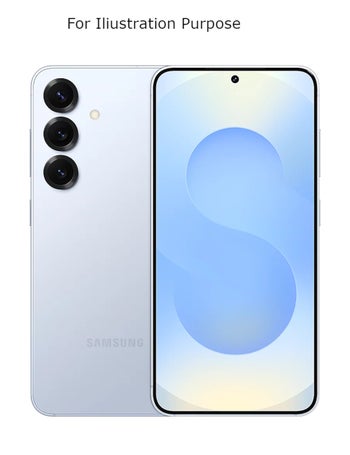
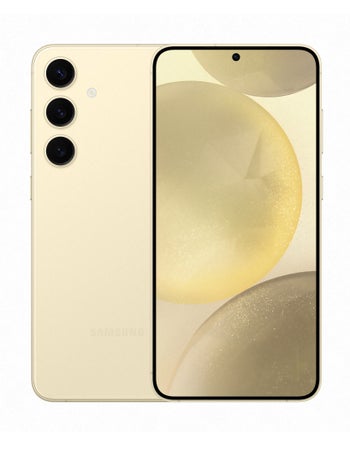

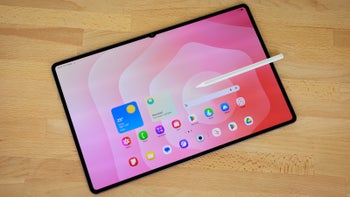
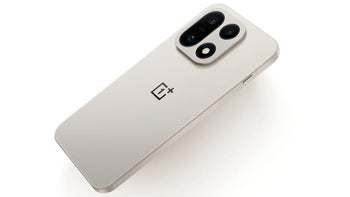
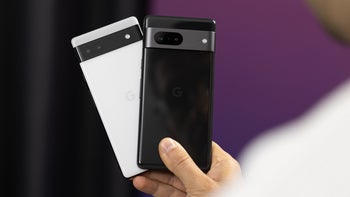

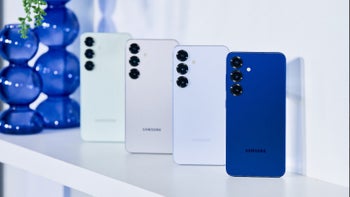
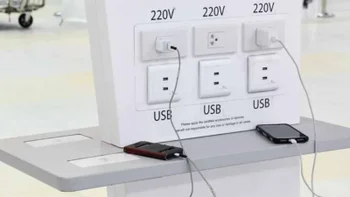



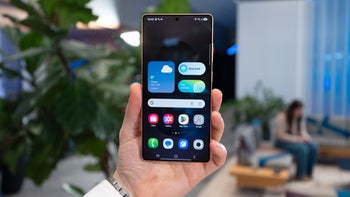

Things that are NOT allowed:
To help keep our community safe and free from spam, we apply temporary limits to newly created accounts: